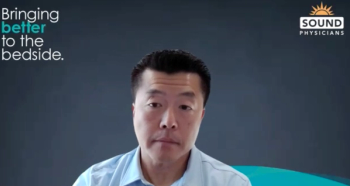
Dr Gregory Vidal: Some Populations Continue to Face Barriers to Care Despite Virtual Options

Minority, low-income, and elderly patients faced greater barriers to care even when it went virtual during the pandemic, according to Gregory Vidal, MD, PhD, medical oncologist specializing in breast cancer at West Cancer Center.
Minority, low-income, and elderly patients faced greater barriers to care even when it went virtual during the pandemic, according to Gregory Vidal, MD, PhD, medical oncologist specializing in breast cancer at West Cancer Center.
Transcript
What are the barriers patients continue to face when it comes to virtual cancer care?
A lot of it is education, comfort; digital savviness is the most limiting factor for my practice. I live and practice in an urban area that's a high minority population, in the Memphis area. Although a lot of my patients and the population have phones, a lot of those phones don't have the technology. They don't have cellular connection—even if they have the smartphone, they're not able to connect with me via that. So, there is that technology savviness that that's been lacking.
And then the elderly population. Some, quite frankly, don't even want to try. If these particular patients have family members, particularly young kids, who are savvy enough to help them through it, that happens. But the elderly [patient] who lives alone, I find that that's a big divide to getting those patients.
And it tends to affect the minority population a little bit more. So therefore, we do see disparities there coming up in terms of those patients now have to come into the center. And those are the patients for who travel is a big deal and trying to get into the center. And then in the pandemic, those are the patients who either are most at risk, because they have chronic illnesses, so they come in and get ill. And because of that, a lot of them stayed home.
And what we're finding out now from a breast cancer perspective is that we're seeing a lot of late diagnoses and more later stage at diagnosis of breast cancer, which then impacts survival. So, it just keeps adding onto itself—compounding. And I think, to speak more specifically to your question, the disparity that it creates for minority, low-income, and elderly patients.
Newsletter
Stay ahead of policy, cost, and value—subscribe to AJMC for expert insights at the intersection of clinical care and health economics.









































